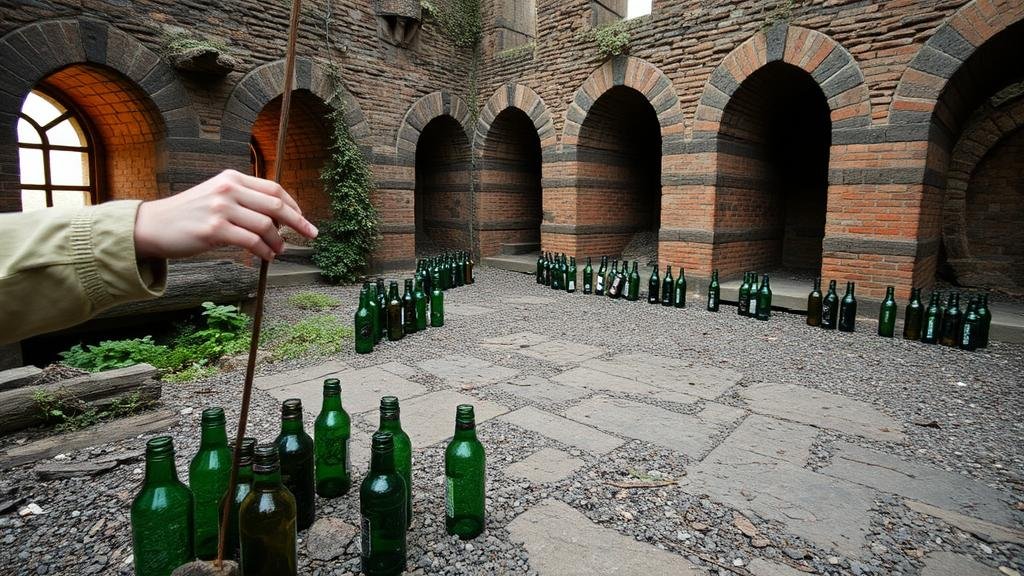Detecting for Collectible Bottles in Historic Brewery Ruins
Detecting for Collectible Bottles in Historic Brewery Ruins
The allure of collectible bottles, particularly those originating from historic breweries, captivates many enthusiasts and archaeologists alike. These remnants from the past tell stories about the culture, economy, and brewing practices of their time. This article delves into strategies, techniques, and considerations for detecting these valuable artifacts within the ruins of historic brewery sites.
The Importance of Collectible Bottles
Collectible bottles serve not just as tangible artifacts but also as conduits to understanding the brewing industrys evolution. Bottles can offer insights into:
- Historical Context: Each bottle reflects the design trends and manufacturing techniques prevalent during a specific period, such as the turn of the 20th century, when beer bottling became ubiquitous.
- Consumer Preferences: The style and branding of bottles can reveal consumer tastes and demographics, providing a glimpse into societal norms.
- Technological Advancements: Changes in bottle materials, like the transition from clay to glass, illustrate technological progress in the brewing industry.
Identifying Historic Brewery Sites
When searching for collectible bottles, identifying suitable historic brewery sites is critical. Many breweries, especially in the United States, have a rich history dating back to the 19th century. Consider the following methods for identifying these sites:
- Historic Maps: Local archives often contain maps detailing industrial sites, some of which may no longer exist. A study of these maps can guide you to potential locations.
- Local Histories: Engaging with local historical societies can reveal lesser-known breweries that might not be documented in mainstream sources.
- Online Databases: Resources like the National Park Services National Register of Historic Places often provide data on significant brewery locations.
Techniques for Bottle Detection
Once a site is located, several techniques can be employed for effective bottle detection:
- Ground Penetrating Radar (GPR): This non-invasive technology can help identify buried structures or garbage pits associated with historic breweries. GPR provides a visual representation of subsurface structures, enhancing the chances of uncovering buried bottles.
- Metal Detectors: While primarily used for detecting metallic objects, metal detectors can also be useful in identifying bottle caps and other small artifacts near the surface.
- Shovel Testing: Carefully excavating small test pits in areas with visible debris can lead to the discovery of collectible bottles, especially in sites where previous demolition or construction occurred.
Recognizing Authentic Collectible Bottles
Identifying collectible or valuable bottles requires a keen eye and a good understanding of the subject. Here are significant factors to consider:
- Embossing and Labeling: Many historic bottles are embossed with the brewery’s name or logo, dating the bottle and confirming its authenticity. Researching specific breweries can reveal valuable markings to look for.
- Color and Material: Antique glass bottles may exhibit unique colors, such as amber or green, indicating specific manufacturing techniques. Understanding glass production can help in dating bottles from various periods.
- Condition and Rarity: A bottle’s condition significantly affects its value. Minor imperfections might enhance a bottle’s history but be wary of extensive damage that could lessen its marketability.
Case Studies of Successful Finds
Numerous enthusiasts and professionals have successfully unearthed significant finds in historic brewery ruins. For example:
- The Schmidt Brewery, Minnesota: This site, once one of the largest breweries in the Midwest, yielded hundreds of bottles dating back to the 1930s, including rare, embossed bottles that have become sought after by collectors.
- The Kopp’s Brewery, Germany: In a recent excavation, collectors discovered bottles dating back to the 1800s, complete with original labels that showcase the artistry and marketing of the time.
Legal and Ethical Considerations
Engaging in detecting for collectible bottles within historic brewery ruins involves several legal and ethical considerations:
- Permits: Always check for the need for specific permissions or permits before digging on historic sites or private property.
- Preservation Guidelines: Follow local regulations regarding preservation of historical sites to ensure site integrity is maintained for future research and exploration.
- Respect for History: Approach each site with an appreciation for its history, respecting artifacts that may hold significant archaeological value.
Actionable Takeaways
Detecting for collectible bottles in historic brewery ruins can be an incredibly rewarding pursuit. Here are some actionable takeaways to enhance your efforts:
- Use historical resources and collaborate with local historians before selecting excavation sites.
- Use modern detection technologies alongside traditional methods to increase the chances of successful finds.
- Educate yourself continuously about bottle markings, technology, and legal considerations to ensure informed and responsible detecting.
To wrap up, detecting for collectible bottles in historic brewery ruins is both an art and a science. By employing various techniques and maintaining a respectful, informed approach, enthusiasts can cherish the stories engraved in these artifacts from the past.



